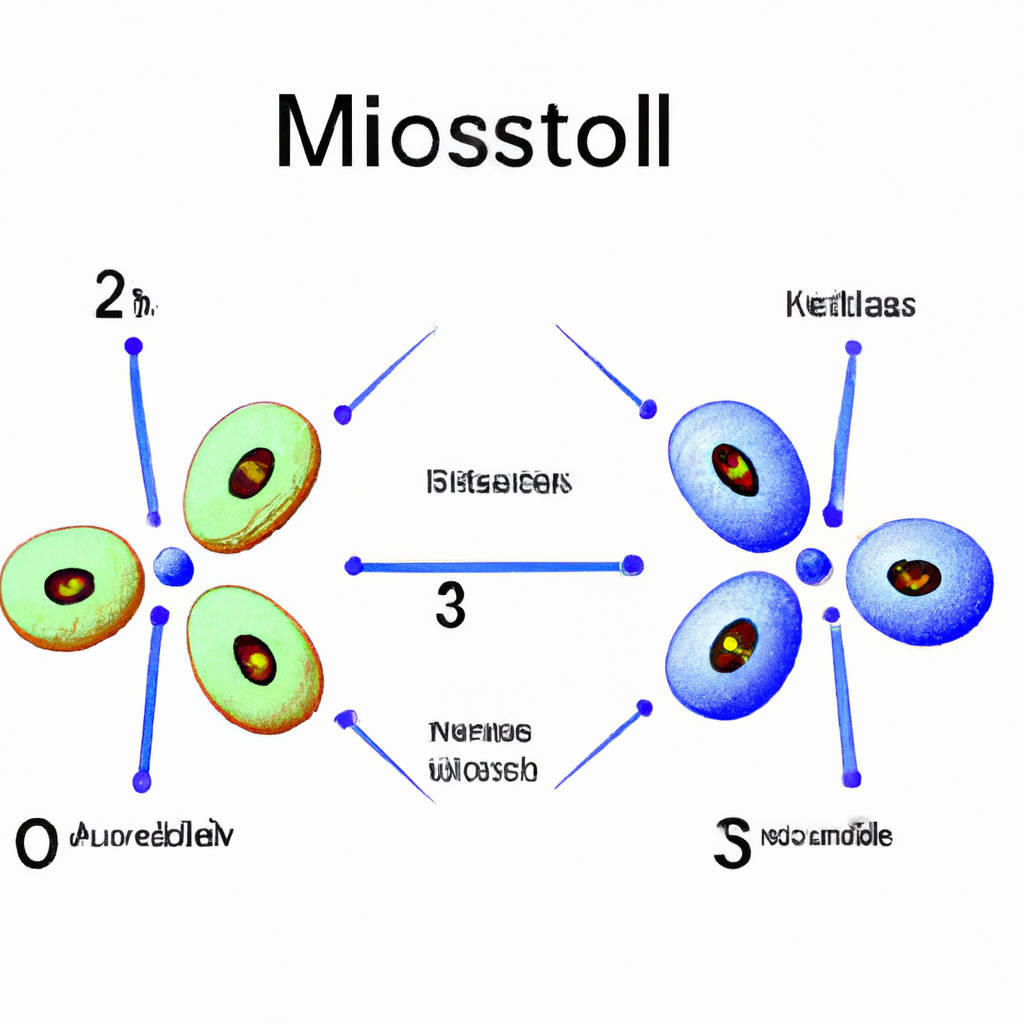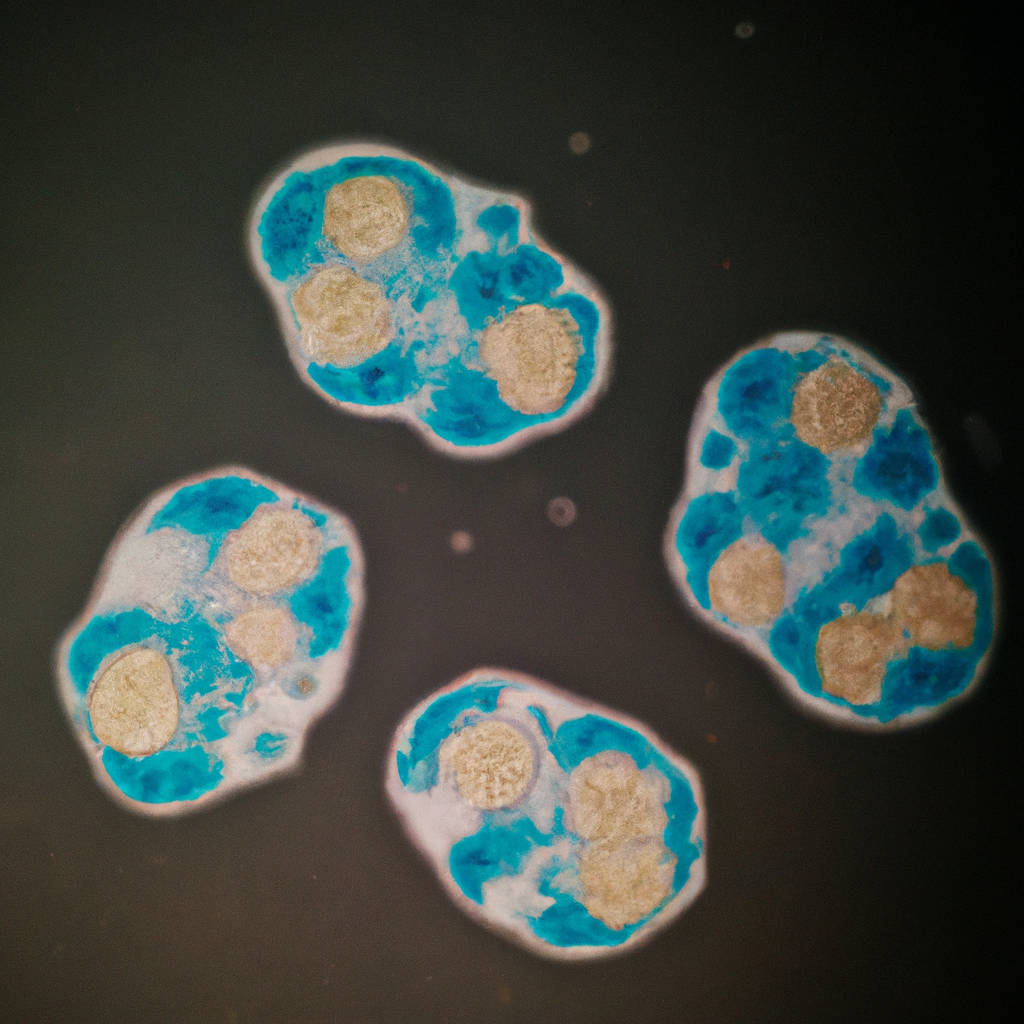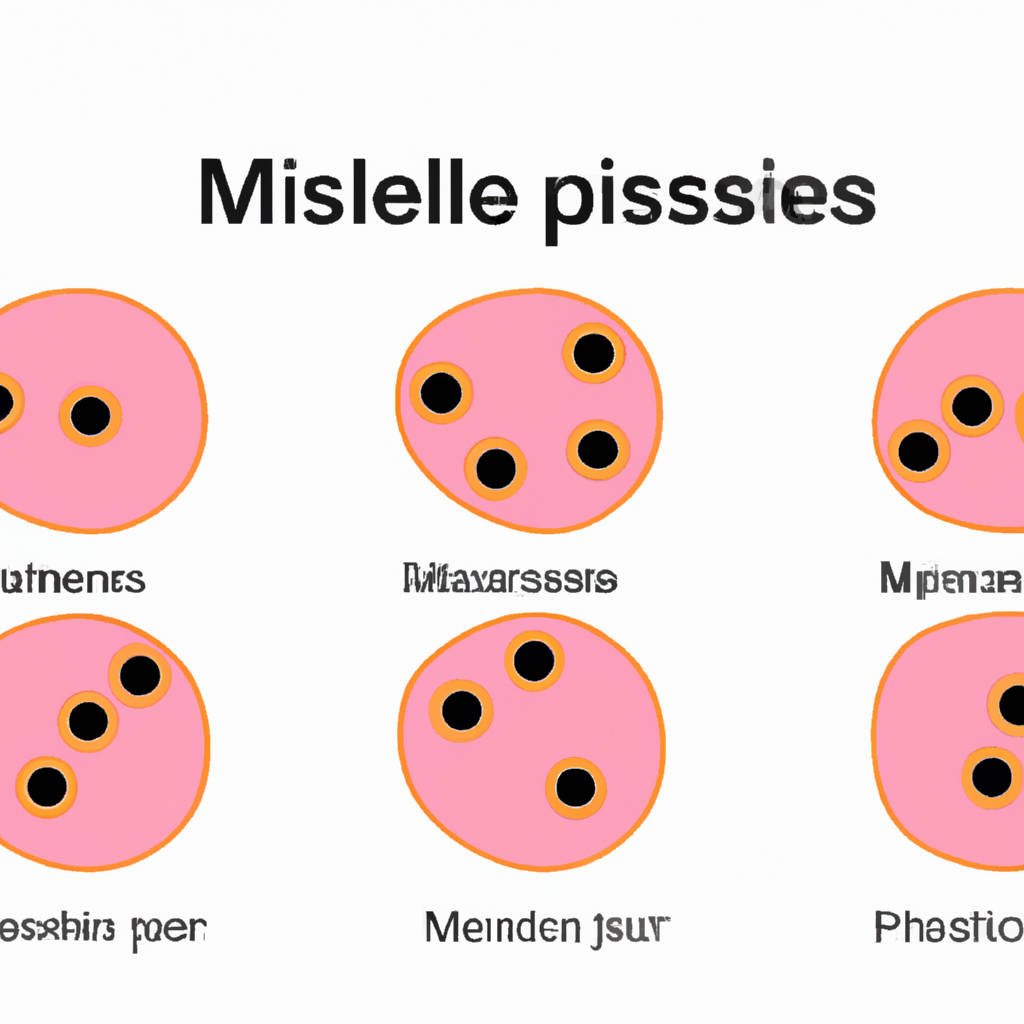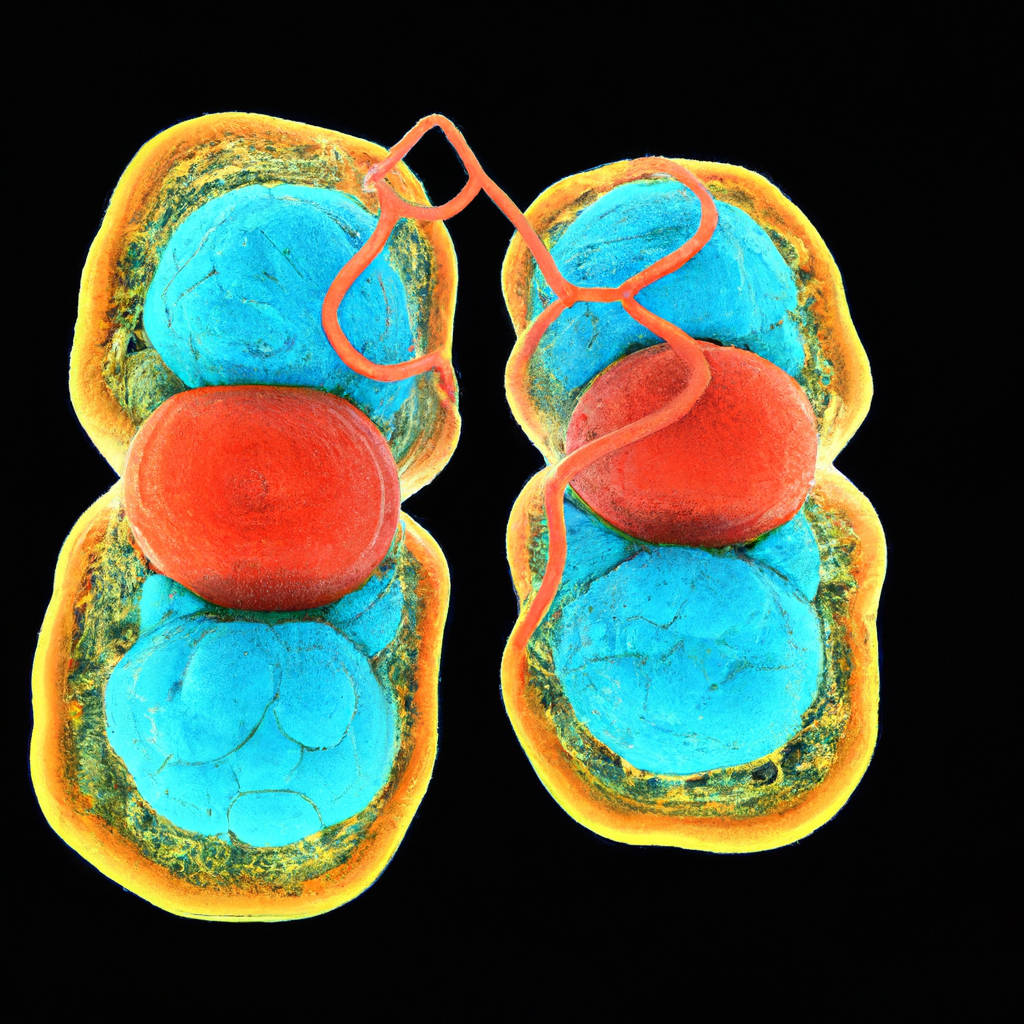Mitosis is a fundamental process that occurs in all living organisms, where a single cell divides into two identical daughter cells. This process is essential for growth, repair, and reproduction in multicellular organisms. During mitosis, the cell undergoes a series of complex and highly regulated steps to ensure that each daughter cell receives an identical set of chromosomes. The process begins with the replication of the cell’s DNA, followed by the alignment and separation of the chromosomes into two separate nuclei. Finally, the cell divides into two daughter cells through a process known as cytokinesis. Mitosis is a tightly controlled process that is regulated by a variety of proteins and enzymes to ensure that each cell division occurs accurately and efficiently.
Cell division is not limited to mitosis; there are also other types of cell division, such as meiosis, which is essential for sexual reproduction in eukaryotic organisms. Meiosis involves two rounds of cell division, resulting in four daughter cells with half the number of chromosomes as the parent cell. This process is crucial for creating genetic diversity and ensuring the survival of species through sexual reproduction. In contrast, mitosis is responsible for maintaining the normal growth and function of an organism’s cells by producing genetically identical daughter cells.
The regulation of cell division is critical for maintaining the overall health and function of an organism. Dysregulation of cell division can lead to the development of diseases such as cancer, where cells divide uncontrollably and form tumors. Cancer cells often have mutations in genes that regulate cell division, leading to uncontrolled growth and proliferation. Understanding the mechanisms that control cell division, such as the proteins and enzymes involved in mitosis, is essential for developing targeted therapies to treat cancer and other diseases caused by abnormal cell division.
In conclusion, mitosis and cell division are essential processes that ensure the growth, repair, and reproduction of living organisms. These processes are tightly regulated and controlled to ensure the accurate division of genetic material and the production of healthy daughter cells. Understanding the mechanisms that govern cell division is crucial for maintaining the overall health and function of an organism and developing targeted therapies for diseases such as cancer. By studying mitosis and other types of cell division, scientists can gain insights into the fundamental processes that govern life and develop new treatments for a variety of diseases.

Mitosis in the Cell Cycle
Mitosis is a crucial process in the cell cycle that allows cells to divide and replicate. During mitosis, a cell undergoes a series of highly coordinated events that result in the formation of two identical daughter cells. The process begins with the condensation of the genetic material into distinct chromosomes, which are then aligned along the cell’s equator. Next, the chromosomes are pulled apart by spindle fibers and distributed equally to each daughter cell.
Finally, the cell divides into two separate cells through a process called cytokinesis. Mitosis is essential for growth, development, and repair in all organisms, as it ensures that each new cell receives the correct amount of genetic material. Without mitosis, organisms would not be able to grow, develop, or repair damaged tissues.
In addition to its role in normal cell division, mitosis is also important in preventing the formation of abnormal cells that can lead to diseases such as cancer. By ensuring that cells divide in a controlled and regulated manner, mitosis helps to maintain the proper functioning of tissues and organs in the body. Overall, mitosis is a fundamental process in the cell cycle that plays a crucial role in the growth, development, and maintenance of all living organisms.
Chromatin Condensation in Mitosis
Chromatin condensation in mitosis is a crucial process that occurs during cell division. Mitosis is the process by which a cell divides into two identical daughter cells. During mitosis, the chromatin, which is the complex of DNA and proteins that make up chromosomes, condenses into tightly coiled structures known as chromosomes. This condensation is essential for the accurate segregation of genetic material into the daughter cells. Without proper chromatin condensation, errors in chromosome segregation can occur, leading to chromosomal abnormalities and potentially harmful consequences for the cell.
Chromatin condensation is regulated by a number of proteins and enzymes that help to compact the chromatin into a more condensed form. One key protein involved in this process is condensin, which helps to wrap the DNA around itself, leading to the formation of tight loops of DNA that eventually coil into chromosomes. Another important player in chromatin condensation is histone proteins, which help to stabilize the coiling of DNA and promote the formation of higher-order chromatin structures.
The condensation of chromatin during mitosis serves several important functions. First, it helps to ensure that each daughter cell receives an equal and complete set of chromosomes. By condensing the chromatin into distinct chromosomes, the cell can more easily segregate the genetic material during cell division. Additionally, the condensation of chromatin helps to protect the DNA from damage during mitosis. By compacting the DNA into a more condensed form, the cell can more effectively prevent breaks or other damage to the genetic material.
In conclusion, chromatin condensation in mitosis is a critical process that ensures the accurate segregation of genetic material during cell division. By condensing the chromatin into chromosomes, the cell can more efficiently distribute the genetic material to the daughter cells and protect the DNA from damage. Understanding the mechanisms that regulate chromatin condensation in mitosis is essential for unraveling the complex process of cell division and its role in maintaining genetic stability.

Mitotic Spindle and Chromosome Separation
Mitotic spindle and chromosome separation are crucial processes during cell division. The mitotic spindle is a complex structure made up of microtubules that form during cell division and play a key role in separating the chromosomes. The spindle fibers attach to the chromosomes at the kinetochores, which are specialized protein structures located on the centromere of each chromosome.
As the spindle fibers contract, they pull the chromosomes apart, ensuring that each daughter cell receives an identical set of chromosomes. This process is essential for the accurate distribution of genetic material and ensures that each new cell has the correct number of chromosomes. Any errors in chromosome segregation can lead to genetic abnormalities and potentially harmful consequences for the organism. Therefore, the proper functioning of the mitotic spindle and chromosome separation is critical for the maintenance of genetic stability and the health of an organism.
Researchers continue to study these processes in order to gain a better understanding of how they are regulated and how errors can be prevented. By unraveling the intricacies of mitotic spindle and chromosome separation, scientists hope to develop new strategies for treating diseases that result from chromosome instability, such as cancer. Overall, the mitotic spindle and chromosome separation are fundamental processes that are essential for the survival and proper functioning of cells in all organisms.
Well-Defined Phases of Mitosis
Mitosis is a fundamental process in the cell cycle that involves the division of a cell’s nucleus into two identical daughter nuclei. The phases of mitosis are well-defined and tightly regulated to ensure proper cell division. The first phase, prophase, is characterized by the condensation of the chromatin into distinct chromosomes, the breakdown of the nuclear envelope, and the formation of spindle fibers. Next, in metaphase, the chromosomes align along the metaphase plate in the center of the cell.
This alignment is crucial for ensuring that each daughter cell receives an equal number of chromosomes. Anaphase follows, during which the sister chromatids are pulled apart by the spindle fibers and move towards opposite poles of the cell. Finally, in telophase, the nuclear envelope reforms around each set of chromosomes, the chromosomes decondense, and the spindle fibers disassemble.
This is followed by cytokinesis, the division of the cytoplasm, resulting in two separate daughter cells. The well-defined phases of mitosis ensure that the genetic material is faithfully distributed to each daughter cell, maintaining the integrity of the genome. Any disruption in the regulation of these phases can lead to errors in cell division, potentially resulting in genetic instability and diseases such as cancer. Therefore, understanding the well-defined phases of mitosis is crucial for advancing our knowledge of cell biology and developing potential treatments for diseases related to cell division.

Prophase
Prophase is the first stage of cell division in eukaryotic cells. During prophase, the chromatin in the nucleus condenses into visible chromosomes, each consisting of two sister chromatids held together by a centromere. As prophase progresses, the nuclear membrane dissolves, allowing the chromosomes to become more organized and easier to separate during cell division. Additionally, the mitotic spindle begins to form, consisting of microtubules that will help move the chromosomes to opposite ends of the cell.
The centrosomes, which contain the microtubule organizing centers, also begin to move to opposite poles of the cell. Prophase is a crucial stage in cell division because it sets the stage for the orderly separation of chromosomes into two daughter cells. Without the proper condensation of chromosomes and formation of the mitotic spindle, errors in cell division can occur, leading to genetic abnormalities and potential health issues. Overall, prophase is a complex and highly regulated process that ensures the accurate distribution of genetic material to daughter cells.
Metaphase
Metaphase is a critical stage in the process of cell division known as mitosis. During metaphase, the chromosomes line up along the center of the cell in a single file, creating what is known as the metaphase plate. This alignment is crucial for ensuring that each new cell receives the correct number of chromosomes. The chromosomes are attached to spindle fibers at their centromeres, which help to pull them apart and segregate them evenly into the two daughter cells.
Metaphase is a highly regulated process, with checkpoints in place to ensure that everything is proceeding correctly before the cell moves on to the next stage of division. Any errors in chromosome alignment during metaphase can lead to genetic mutations in the daughter cells, which can have serious consequences for the organism as a whole. Overall, metaphase plays a vital role in maintaining the genetic integrity of cells and ensuring that they are able to divide successfully.

Anaphase
Anaphase is a critical stage in the process of cell division known as mitosis. During anaphase, the sister chromatids, which are copies of the original chromosome, are pulled apart and move towards opposite ends of the cell. This separation is crucial for ensuring that each new daughter cell receives the correct number of chromosomes. The separation of sister chromatids is accomplished through the action of microtubules, which form the mitotic spindle and attach to the centromeres of the chromosomes. As the microtubules contract, they pull the sister chromatids apart with precision and efficiency.
The movement of the chromatids towards opposite poles of the cell is a highly coordinated process, regulated by various proteins and signaling pathways. Any errors or abnormalities during anaphase can lead to genetic instability and potentially harmful consequences for the cell. Thus, anaphase plays a crucial role in ensuring the accurate distribution of genetic material to the daughter cells, ultimately contributing to the growth and development of organisms. Overall, anaphase is a fascinating and intricate stage of mitosis that highlights the exquisite complexity and precision of cellular processes.
Telophase and Cytokinesis
Telophase and cytokinesis are the final stages of cell division, where the newly formed daughter cells begin to separate. In telophase, the chromosomes reach opposite ends of the cell and start to decondense, forming chromatin once again. The nuclear envelope reforms around each set of chromosomes, creating two distinct nuclei within the cell. Meanwhile, cytokinesis occurs, dividing the cytoplasm and organelles between the two daughter cells.
This process is crucial for ensuring that each daughter cell receives the necessary components to function independently. Cytokinesis can occur through different mechanisms, such as cleavage furrow formation in animal cells or cell plate formation in plant cells. Regardless of the mechanism, the end result is the same: two genetically identical daughter cells that are ready to carry out their specific functions. Telophase and cytokinesis are essential steps in the cell cycle, ensuring the accurate distribution of genetic material and cytoplasmic contents to maintain the integrity and functionality of the newly formed cells.
